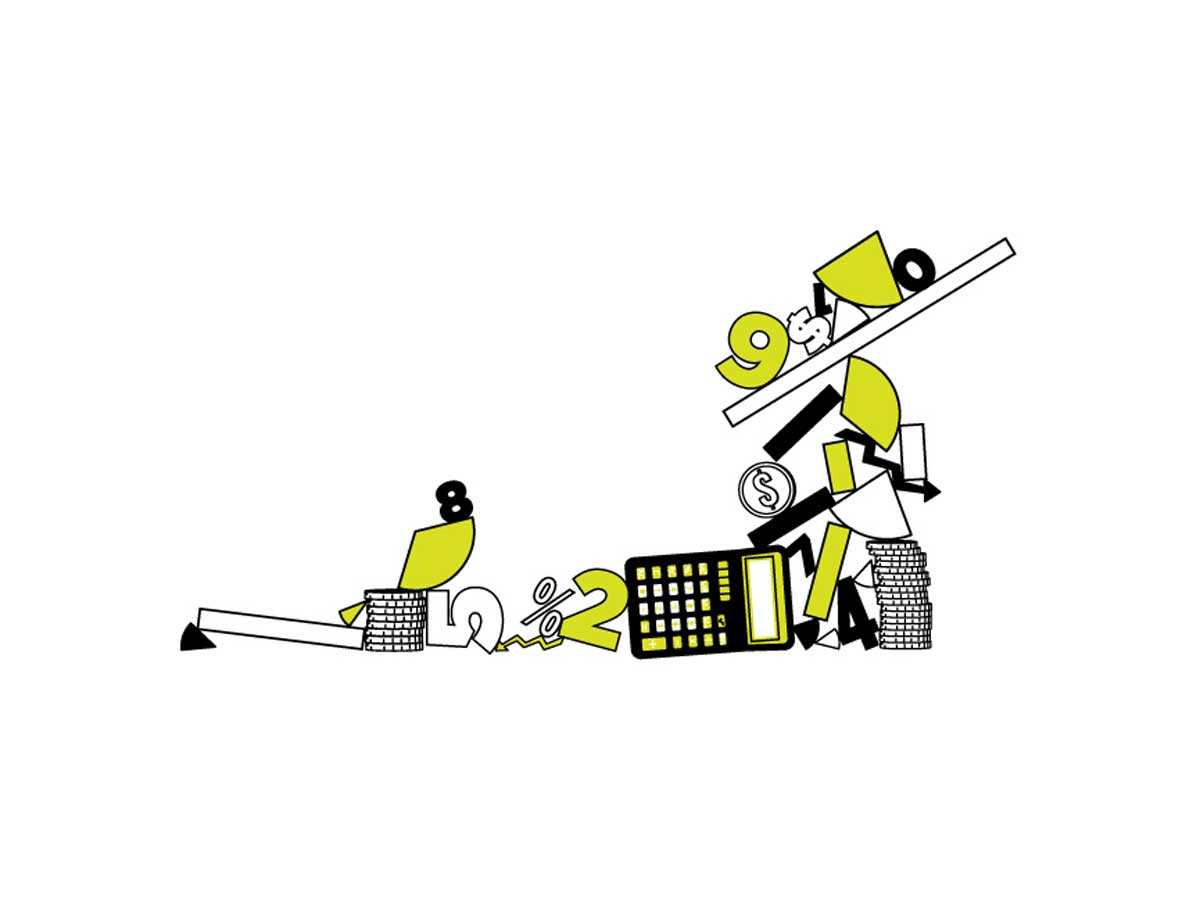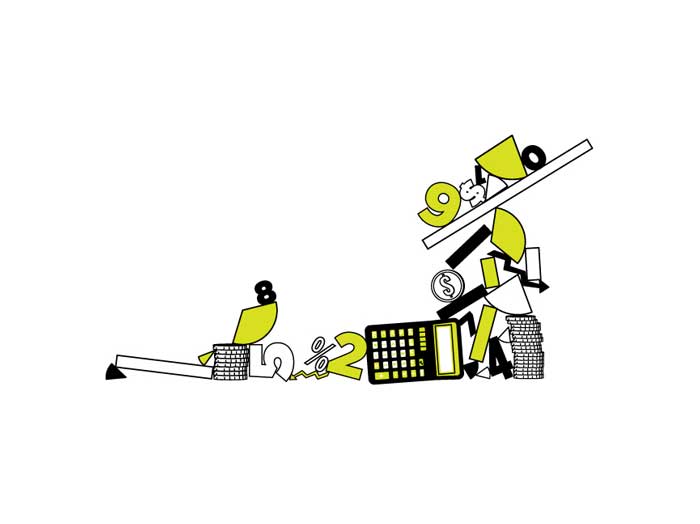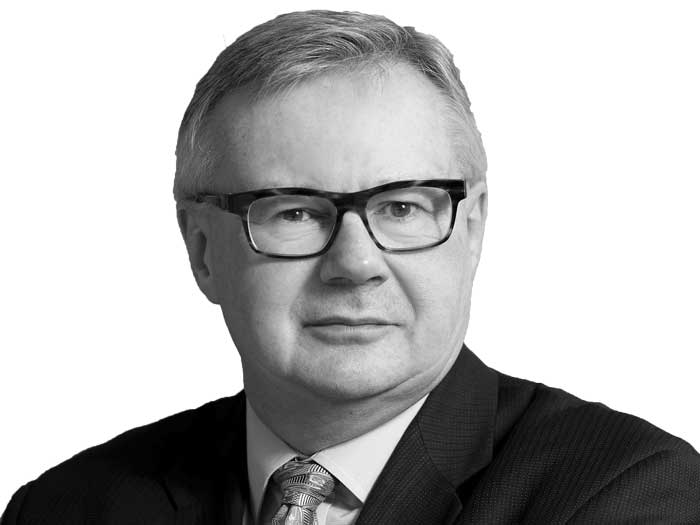
Keeping up with the changing face of audit
 Audit must navigate a vastly more complex business landscape than it did at its inception approximately 130 years ago (Illustration by Cindy Lubinic)
Audit must navigate a vastly more complex business landscape than it did at its inception approximately 130 years ago (Illustration by Cindy Lubinic)
In 1894, the fledgling modern auditing profession faced an identity crisis triggered by the collapse of Kingston Cotton Mills. The British textile company had imploded due to fraudulent stock overstatements spanning the previous four years. Blamed by the public for their failure to unearth the deception, the company’s auditors subsequently faced legal action from disgruntled stockholders. Their primary grievance? Instead of conducting their own stock examination, auditors had relied on fraudulent certificates provided by one of the company’s directors. In a landmark ruling, the presiding lord justice sided with the auditors, famously asserting that “an auditor is not bound to be a detective…He is a watchdog, but not a bloodhound.” Despite societal expectations to the contrary, auditors were not held responsible for ferreting out fraud.
Fast forward almost 130 years, and audit has matured quite a bit, navigating a vastly more intricate business landscape. Inevitably, the “expectation gap” between what auditors believe their roles and capabilities are, and what society demands of them, has become equally complex.
Following the high-profile collapses of Carillion in 2018 and Silicon Valley Bank earlier this year (the second-biggest bank failure in U.S. history), calls for reforms of auditors’ responsibilities regarding fraud have resurfaced. Much of the impetus for reform stems from the increased integration of technologies like AI and machine learning into the audit process, expanding the potential capabilities of audit, and consequently, heightening stakeholder expectations for fraud detection.
Simultaneously, growing urgency surrounding the impacts of climate change has ignited a surge in demand for sustainability assurance. As they grapple with the necessity to support accurate and transparent environmental, social and governance (ESG) reporting, auditors are expected to not only be more diligent financial watchdogs, but also environmental stewards who help advance a sustainable future.
These are the transformations challenging the profession. In a world where trust and accountability are paramount, CPAs possess a unique opportunity to bridge the enduring yet evolving “expectation gap” by embracing innovation, upskilling, and redefining their position within society. As the profession navigates these uncharted waters, will the auditor of the future be a mere watchdog, a relentless bloodhound, or something transcending both roles?
Maggie McGhee, executive director for strategy and governance at the UK-based Association of Chartered Certified Accountants (ACCA), believes that the manner in which accountants harness technology in the next decade is the key to answering that question. “The advent of new technologies brings with it great opportunity to the audit profession, but it also carries risks and forces change in the skills and attributes we require from an auditor,” she says.
 Maggie McGhee, executive director, strategy and governance, Association of Chartered Certified Accountants (ACCA) (Photograph provided)
Maggie McGhee, executive director, strategy and governance, Association of Chartered Certified Accountants (ACCA) (Photograph provided)
In 2019, PwC used drone technology to conduct a stock count audit for the first time, utilizing 300 images of coal reserves in South Wales to calculate the coal’s value within more than 99 per cent accuracy. Other major firms have followed suit since, particularly when the pandemic incentivized the deployment of technology to protect employees from COVID-19. These types of on-the-ground innovations just scratch the surface of what’s possible.
When the collection of audit evidence was primarily paper-driven, standard practice involved auditors examining a sample of journal entries to identify problematic issues, like round-dollar transactions or entries made at odd hours. But the validity of maintaining that standard practice is now being held up to scrutiny from within and outside the profession. AI and machine learning present auditors with the opportunity to rapidly evaluate entire datasets in real time, providing a comprehensive view of potential risks and instances of possible fraud within a company’s records. These tools can also use historical data and patterns to create probability models that predict future risks. By automating this labour, auditors are freed up to focus on analyzing data findings to deliver insights that add value to a company.
But according to Bob Bosshard, chair of Canadian Auditing and Assurance Standards Board (AASB), these technological capabilities also come with a weighty burden of expectation to catch all possible instances of fraud and accurately forecast future corporate demises. “We may have created a technology ‘expectation gap’ that didn’t exist as recently as five years ago,” he says. “If an auditor doesn’t use technology to examine the transactional database, and perhaps relies on audit sampling, is the perception in the marketplace that auditors should always look at 100 per cent of the data? And in the context of a major corporate collapse, the public might wonder why an auditor failed to use generative AI properly—or at all—to get better visibility on what the transactions were telling them.”
 Bob Bosshard, chair, auditing and assurance standards board (Photograph provided)
Bob Bosshard, chair, auditing and assurance standards board (Photograph provided)
For McGhee, the key solution to eliminating this “expectation gap” is educating stakeholders on what exactly CPAs can and can’t provide in this space. To this end, the ACCA utilizes every possible approach, including social media like YouTube (where the ACCA has more than 100,000 subscribers). “We’ve even waded into TikTok,” she says. “It’s the profession’s responsibility to demonstrate the value of audit to society. You never hear about the vast majority of audits that go exceptionally well; you only hear about audits in the rare cases where things go wrong.”
As the public pressures auditors to adopt more technological solutions, increased reliance on technology poses a host of new risks. Aside from AI misinformation and cybersecurity threats, AI algorithms can inherit biases from the data they “learn” from, leading to unfair or discriminatory outcomes. In addition, concerns have been raised over the lack of transparency on how these complex systems make decisions. These troubling issues present an opportunity for CPAs to expand the services they provide. Although independent third-party assurance of emerging technologies isn’t currently mandated by legislation, the Big Four firms are increasingly offering consulting and advisory services to help companies with readiness assessments that mitigate risks related to their deployment.
On a global level, the International Auditing and Assurance Standards Board (IAASB) has led the way in formulating the responsibilities of the profession to evolve, including technological evolutions, with three projects underway in the past two years for updated auditing standards that address audit evidence, going concern, and fraud.
Regarding audit evidence, the IAASB has established requirements that emphasize the importance of the auditor being professionally skeptical and validating information before it becomes audit evidence. “Is the information fit for purpose? Does it meet audit objectives before it’s rolled into the audit?” says Bosshard.
As for going concern, there will be greater responsibility on the practitioner to carry out a thorough and transparent risk assessment of a business. In order to be more current in evaluating risks of the day, the new standards for going concern also propose that auditors now look forward 12 months from the approval of their audit report, rather than looking forward 12 months from the balance-sheet date.
Consultation periods in both audit evidence and going concern were concluded earlier this year, while more robust fraud standard proposals that incorporate community concerns and employ a higher degree of professional skepticism will be approved at the international level this December, and in Canada by the AASB in early 2024. “These revisions don’t change management’s ultimate responsibility for financial statements, but they provide clarity in terms of the processes the auditor needs to follow,” says Bosshard.
Technological transformations, coupled with the necessary adoption of revised standards, have arrived just in time to equip CPAs with additional tools to combat the definitive existential threat of the 21st century: climate change. In light of the historic 2015 Paris Agreement’s goal to cap global temperature increases at two degrees Celsius above pre-industrial levels, as well as Canada’s commitment to achieve net-zero emissions by 2050, there has never been a greater public need and expectation for robust sustainability assurance practices.
When Kaylynn Pippo, director of CPA Canada’s Research, Guidance and Support group, first started out in KPMG’s risk consulting practice at its downtown Toronto office ten years ago, the entire sustainability team servicing clients nationwide was composed of less than ten dedicated professionals, whereas today it is well over 100. “The CPA profession has been doing work in this space for more than 25 years, but it’s really just becoming mainstream more recently,” says Pippo. “Today, KPMG and other Big Four firms have extensive teams providing sustainability advisory and assurance services, and the growth is exponential.”
 Kaylynn Pippo, director, research guidance and support, CPA Canada (Photograph provided)
Kaylynn Pippo, director, research guidance and support, CPA Canada (Photograph provided)
According to a 2023 global benchmarking report jointly published by the International Federation of Accountants (IFAC), the American Institute of CPAs (AICPA) and the Chartered Institute of Management Accountants (CIMA), showed a significant increase in the number of large companies seeking assurance on their ESG reporting. Specifically, the study found that 64 per cent of large companies sought assurance on their ESG reporting, up from 51 per cent in 2019.
This uptick has galvanized standards-setters to formalize protocols and requirements within the domain of sustainability. In 2021, the International Financial Reporting Standards (IFRS) Foundation created the International Sustainability Standards Board (ISSB). This past June, the ISSB issued IFRS S1 and IFRS S2, its first standards for sustainability-related disclosures in capital markets. In the same month, Canada’s recently formed Canadian Sustainability Standards Board became operational and will support the uptake of ISSB standards in Canada. A few months earlier, in January, the Corporate Sustainability Reporting Directive (CSRD) was adopted in the EU, requiring all large companies and listed companies (excluding listed micro-enterprises) to make regular ESG disclosures. On the assurance side, just this past August, the IAASB published its first proposed international standard on sustainability assurance, for public exposure and consultation, to be adopted in Canada concurrently.
Now that a global baseline in sustainability standards has been established worldwide, it will be up to jurisdictional regulators like the Canadian Securities Administrators (CSA) to mandate their implementation domestically, particularly in areas like the reporting of and assurance on greenhouse gas emissions. “In the meantime, entities are focused on understanding the reporting of their sustainability information, as well as ensuring that the right data is being collected and that proper controls are in place,” says Pippo.
While stand-alone sustainability reports are currently the most popular format for disclosure, particularly in North America, Bosshard predicts that integrated reporting that blends financial information with ESG-related disclosures will become the norm in the near future. Pippo agrees. “On the financial statement audit side, firms are already starting to train their auditors to embed how climate risks impact the financials into their thinking and audit approach,” she says
As it stands today, CPAs are encountering competition in the sustainability assurance space, notably from ESG consultants contributing to a new expectation gap in the market. IFAC’s global benchmarking report revealed that 63 per cent of engagements of large companies were conducted by audit firms in 2019. However, that number dropped to 57 per cent in 2021, as non-accounting service providers took a bigger slice of the pie. In Canada, nearly two-thirds of ESG assurance services were provided by audit firms or their affiliates. South of the border, only 15.3 per cent of services in the United States were provided by auditors. These numbers lag far behind figures of some EU countries like France, Germany and Spain, where auditors take on nearly 100 per cent of assurance.
Pippo believes these figures reveal more work needs to be done by the North American accounting profession to take on these responsibilities. “CPAs who conduct financial statement audits are already trusted by companies and familiar with their processes, and they’re trained to adhere to recognized audit and assurance standards,” says Pippo. “Auditors are also committed to meet relevant ethical and quality management requirements. It’s all really built into our profession. These positives will enable CPAs to move more widely into these emerging areas.”
Throughout the profession, efforts to address this demand are ramping up. In 2021, the University of Waterloo launched Canada’s first-ever program in sustainability and financial management. The following year, EY announced it would offer a Master’s in sustainability, in association with Hult International Business School, exclusively for all of its approximately 312,000 employees—free of charge.
This November, CPA Canada and the University of Waterloo published a study looking into the marketplace for assurance services beyond the financial statement audit, highlighting future opportunities for CPAs as well as the skill sets they’ll need to take advantage of them. This research builds on the Canadian accounting profession’s Competency Map 2.0, which identifies big data and data analytics as foundational core competencies. Along with those technical skills, auditors will rely more heavily on their “soft skills,” critical thinking and ethical decision-making, to harness them effectively.
So, what does the auditor of the future look like?
I Auditors’ traditional role will broaden beyond financial information to include ESG topics as well as automated tools and technologies. CPAs will be sought by their clients as technology and sustainability experts and advisors, to meet the multifaceted challenges of today’s business environment. “By 2030, the benefits of technology will echo throughout the profession,” says McGhee. “Spending months doing very detailed transaction-based testing will be a thing of the past—that work will be automated. Instead, auditors will add value, exercise professional skepticism, and think strategically.”
The latest crop of professionals will encounter a new “expectation gap,” entering new territories as they branch out beyond the norm of what auditors are known for. It’s a journey that inevitably comes with risks and uncertainties, but those perils are nothing new for the profession. Going back to the 1894 Kingston Cotton Mills case, auditors have always been challenged by the public and survived stronger than before. “Auditors have constantly been adapting to act in the public interest and provide value-added services,” says Pippo. “In that same way, the next generation of accountants will transform the value the profession brings moving forward. It’s a vital role that society will continue to depend on as it faces its biggest challenges.”
MORE ON AUDIT
Check out CPA Canada’s extensive audit and assurance resources.